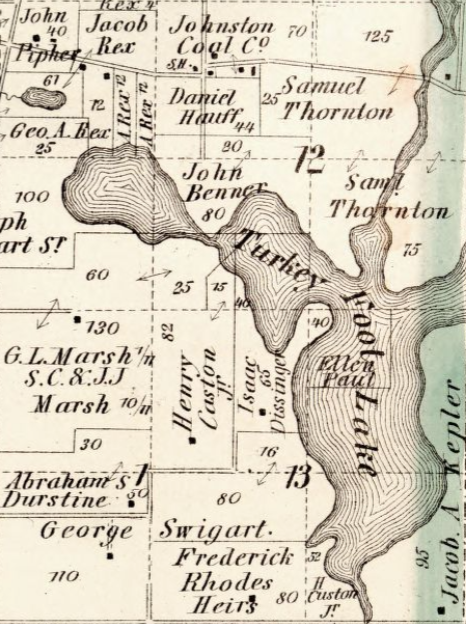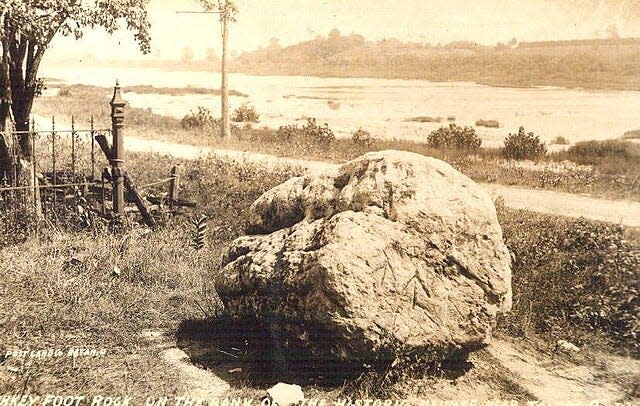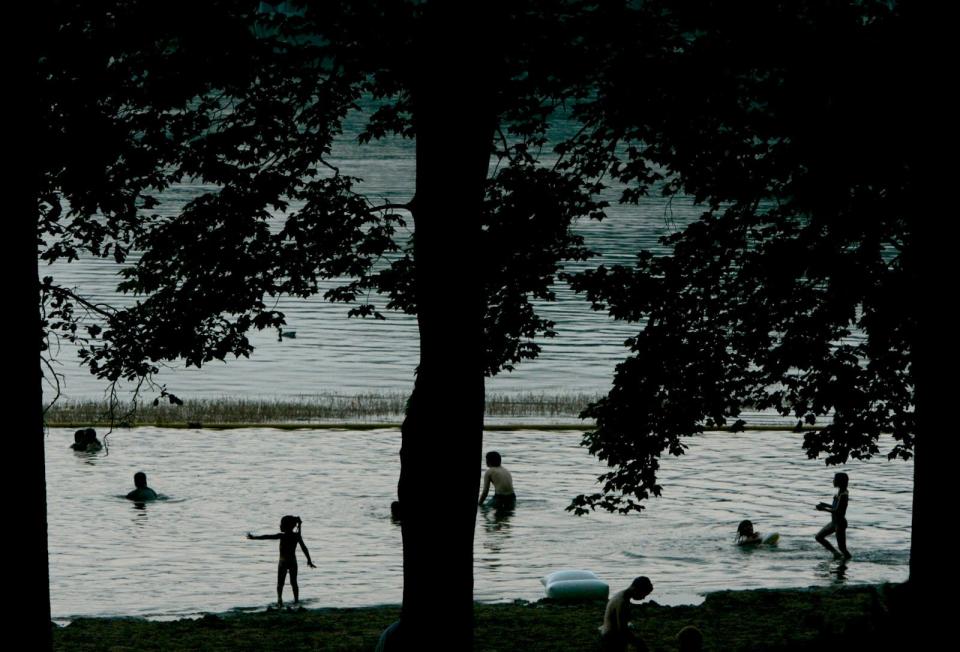How did Turkeyfoot Lake get its name? It’s a mystery in history | Mark J. Price

The question seemed easy enough. In fact, I thought I already knew the answer. I didn’t think I’d be falling down a rabbit hole.
My former Beacon Journal colleague Kathy Antoniotti and her friend Maggie Frost wanted to know: What is the origin of the name Turkeyfoot?
Turkeyfoot Lake, Turkeyfoot Lake Road, Turkeyfoot Road and Turkeyfoot Island are among the topographic features at Portage Lakes in Summit County.
I distinctly remember being told as a kid that Turkeyfoot Lake got its name because, when viewed from the air, it looks like the three-toed foot of a turkey. Decades later, I began to wonder: When viewed from the air?!?!

Turkeyfoot Lake, originally spelled Turkey Foot Lake, is eons older than the aviation age. How did Ohio settlers know what the lake looked like from the air? They certainly didn’t admire the view from Western Reserve blimps.
But that’s OK. For thousands of years, cartographers have drawn maps without floating above the planet to check their work.
When I view Turkeyfoot Lake on a map, I see a turkey’s footprint. Full disclosure: When I look at cloud formations, I think I see Bugs Bunny, Albert Einstein and the Mona Lisa — sometimes at the same time.
Maybe there’s another origin.
Is Turkeyfoot an Indian name?
“We can’t find anything online although a very well known lake and road are named Turkeyfoot,” Antoniotti wrote. “That seems strange. My imagination conjures up lots of interesting speculation, but the internet only notes a fictional Chief Turkeyfoot who allegedly lived in Pennsylvania. A shallow dive through Ancestry.com tells me the origin could be either Northern Europe or Syria.”
Antoniotti joked that she and Maggie have decided “to make up a really juicy story if we can’t get an answer.”
I asked my uncle, Al Bollas, the former New Franklin mayor who serves as a captain on Portage Princess cruises. He said Portage Lakes historian Carol Eubank told him that Turkeyfoot was an American Indian chief “who walked softly through the woods” like a turkey.
History books lend credence to the Indian name.
According to William Henry Perrin’s “History of Summit County” (1881): “Turkey Foot Lake, probably the largest body of water in the county … is said to have been named for a noted Indian chief. Its outline is very irregular, the lake consisting of several distinct bodies of water joined by straits of different widths.”
In the 1868 volume “The Pictorial Field-Book of the War of 1812,” U.S. historian Benson John Lossing links the name Turkey Foot to the Battle of Fallen Timbers (1794) in which Maj. Gen. Anthony Wayne’s troops defeated a confederation of Indian tribes near present-day Maumee in Northwest Ohio.
“Among the brave warriors in the battle who were the last to flee before Wayne’s Legion was Me-sa-sa, or Turkey-Foot, an Ottawa chief, who lived on Blanchard’s Fork of the Au Glaize River,” Lossing wrote. “He was greatly beloved by his people. His courage was conspicuous.”
According to tradition, Turkey Foot climbed onto a boulder near the Maumee River to rally his men in battle, but was struck by a musket ball and died on the rock.
“Long years afterward, when any of his tribe passed along the Maumee trail, they would stop at that rock, and linger a long time with manifestations of sorrow,” Lossing noted.

In “Historical Reminiscences of Summit County” (1854), historian Lucius V. Bierce further explained: “The Indians have carved a rude resemblance of a turkey’s foot on that rock, and to this day in passing it, they deposit on it a piece of tobacco as an offering to the spirit of Turkey Foot, their favorite chief.”
The original Turkey Foot Rock, or at least a section of it, is on display near Maumee at the Fallen Timbers State Memorial, which was dedicated in 1994 on the 200th anniversary of the Battle of Fallen Timbers. The monument pays tribute “to all the American Indians who gave their lives at this place.”
A myth that became history?
Not everyone agrees with the legend of Turkey Foot — or whether the chief even existed. Author John Rose, a member of the Waterville Historical Society in Lucas County, thinks the story of Chief Turkey Foot is a myth that was repeated so often that it became “history.”
“The historical literature about the Indian Confederation does not mention a chief named Turkey Foot and, finally, folks who are experts in Indian affairs say that Indians did not name their sons after body parts but only after an admired animal,” he argued in 2019. “In other words, there never would have been a chief named Turkey Foot and the whole story is a fabrication.”

Ultimately, it remains unclear why a Summit County body of water would be named for Me-sa-sa. It’s been known as Turkeyfoot Lake since at least the 1820s.
Frank S. Lahm, who built the historic clubhouse on Turkeyfoot Island in 1876, doubted there would ever be a definitive answer.
“The mystery of the name ‘Turkeyfoot’ remains unsolved nor is there any one living old enough to unravel it,” he wrote in 1930.
“There was in former times in Northern Ohio an Indian chief called Turkeyfoot; in the native tongue Me-sa-sa, but there are no records to prove he gave his name to the lake. Whether it was so called by the Indians and translated into English by the whites, or whether owing to its peculiar shape it was named ‘Turkeyfoot’ by the early settlers will likely never be known.”
I still think the lake looks like a turkey’s foot.
Mark J. Price can be reached at mprice@thebeaconjournal.com
Local history: See Cathedral Tower in Cuyahoga Falls as the Rev. Rex Humbard intended
This article originally appeared on Akron Beacon Journal: How did Turkeyfoot Lake get its name?

